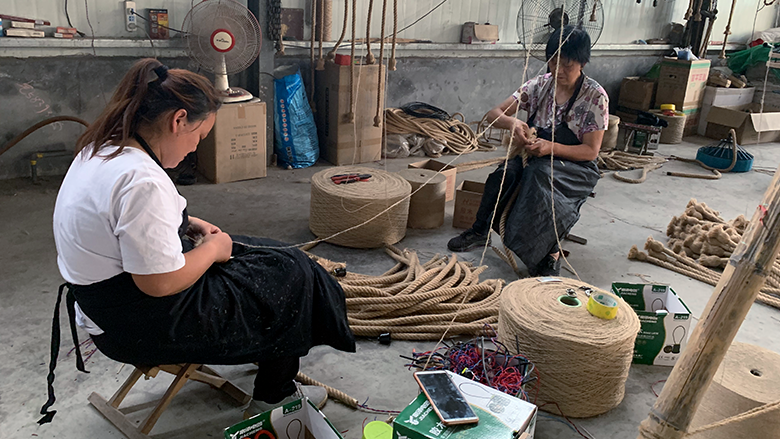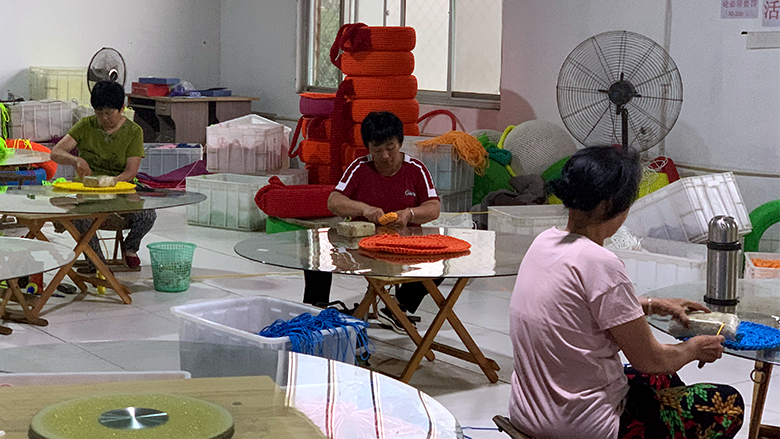Approach
Anecdotal evidence has been building for several years that the development of e-commerce has made a difference in some communities in rural China.
Sixteen years ago, Chinese e-commerce giant Alibaba launched Taobao, a consumer-to-consumer platform, to capture the efforts of millions of Chinese looking for a way to market and sell their goods. Even though Taobao villages were far from economic centers, some 95% of them were in the more developed eastern region of the country.
In villages, the concept caught on. Entrepreneurs began to go online in search of customers. In 2009, clusters of rural online entrepreneurs, 100 or more at a time, began selling everything from dance costumes to electronics to children’s toys in what Alibaba dubbed “Taobao Villages.” The logistics, service, and training support provided by the government and private sector companies has supercharged the ability of farmers and local entrepreneurs to access broader markets.
The Taobao Village study conducted by the World Bank explores the characteristics of the clusters for the first time. It looks at demographics, social attitudes, assets, and income, and provides a window into how e-shops operate and their limitations.
Women weave rope in a Taobao village. © Xubei Luo/World Bank The survey, conducted in summer 2018, reaped information from 1,371 households in 80 villages across eight provinces (Beijing, Hebei, Jiangsu, Zhejiang, Fujian, Shandong, Guangdong, and Yunnan), representative of the over 2,000 Taobao villages nationwide.
Results
Many cases demonstrate that e-commerce is helping to revitalize Chinese rural villages. By connecting sellers to buyers, it is widening market access for rural producers. This not only supports sales in large volumes of standardized labor-intensive products such as clothing and shoes, but also facilitates the development of niche products to meet consumer demands in the long-tail market. In many cases, e-commerce has expanded the market for goods whose sales had languished, including traditional cultural products, and opened new doors for perishable fruits and vegetables. It allows entrepreneurs to connect with consumers remotely through improved website design, establish a brand, and tailor products to specific demands. While the effect of e-commerce to support the development of these impoverished villages is undeniable, improvements in human capital, infrastructure, and business environment are crucial.
In Dongfeng village, a small community in the Suining County area of Jiangsu province, seizing the opportunities of the high demand for logistics services from the furniture-manufacturing e-merchants, delivery services and other logistics support blossomed. The first logistics company settled in Dongfeng village in 2006. By 2014 there were 43 express delivery companies in the e-commerce cluster. Other sorts of businesses joined, providing financial services, photo processing, e-shop design, management consulting, legal services, and more.
Soon, e-commerce spread to neighboring villages. The number of e-shops in Suining doubled between 2014 to 2015 and doubled again in 2016. Per capita GDP in Suining grew from 8,159 yuan ($1,174 in 2008 to 31,320 yuan ($5,029) in 2015.
The results in Suining County are mirrored in many villages in coastal China. Rural e-commerce participants are making money. Per capita income of e-commerce households is 80 percent higher than other households in the same communities, the study found. Seventy-seven percent of e-commerce households in Taobao Villages own one or more cars, more than twice as any as non-e-commerce households. And e-commerce workers in Taobao Villages earn more than the national average level of urban private sector workers.
The number of Taobao Villages — those with a total annual e-commerce transaction volume of 10 million yuan ($1.5 million) and at least 100 active online shops — increased from 20 in 2013 to 3,202 in 2018, and to 4,310 in 2019.
Between 2013 and 2016, online purchases from Alibaba platforms in national poverty-stricken counties grew from 67.5 billion yuan ($10.9 billion) to 205.2 billion yuan ($30.9 billion), and online sales grew from 8.4 billion yuan ($1.4 billion) to 29 billion yuan ($4.4 billion). The supply chains needed to support those sales have also grown. More than 200,000 express mail shipping routes have been built from these poor counties to cities. And more than 400 of the counties shipped over 1 million packages from e-commerce activities in 2016, while only 44 did so in 2013.
Workers sit at tables weaving goods that will be sold online. © Xubei Luo/World Bank World Bank Group Contribution & Partners
The report, E-Commerce Participation and Household Income Growth in Taobao Villages, was the product of the World Bank and the Alibaba Group. The Taobao Village survey was conducted in collaboration with the Institute of Social Science survey of Peking University.
Moving Forward
The Bank is furthering its research with the Alibaba Group and the broader research community into developing e-commerce’s full potential to support inclusive growth. With rigorous research, the team hopes to identify policy measures to address the challenges of upgrading value chains and expanding the e-commerce ecosystem in rural China.


